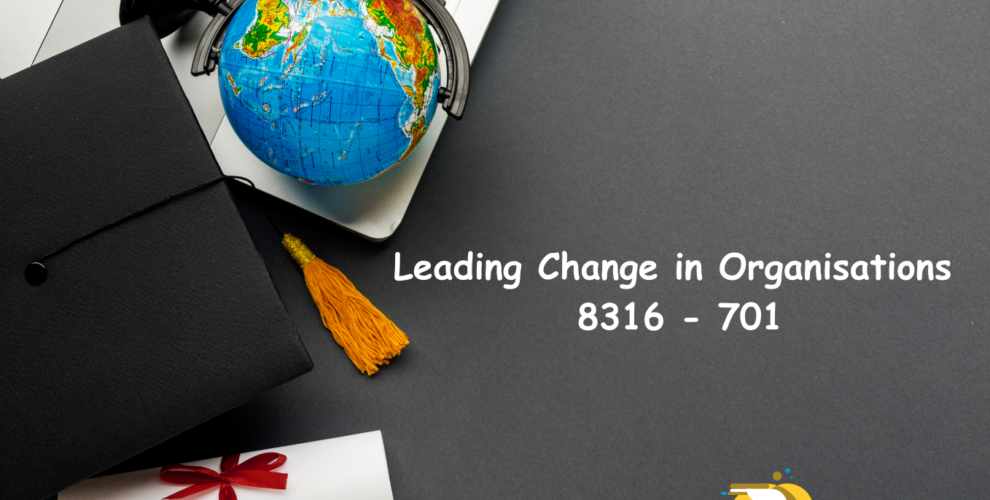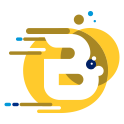About This Unit
This unit’s focus is on developing the learner’s ability to make sound managerial decisions and affect positive change in their organizations via the application of various leadership styles and techniques. Once the unit is complete, learners should be able to demonstrate that they have read and understood the major theoretical and empirical publications in the discipline. Make sure to provide credit by referencing this in your paper. The project must also convincingly demonstrate the combination of theory and practice.
What You will learn
The purpose of this unit is to provide prospective and recently promoted upper-level managers with a firm understanding of the external and internal demands for change and the variables influencing these forces. The learner will gain knowledge of various approaches, methods, and theoretical approaches for managing change and measuring an organization’s capacity to adapt. The learner will understand the importance of values, culture, attitudes and relationships in shaping responses to change and the human dimensions of transition. In addition, learners will learn about alternative leadership models and theories that are well-suited to the challenges of change, as well as the criteria and procedures for evaluating such theories and models. After completing this lesson, learners should be able to distinguish between Kaizen, breakthrough change/process re-engineering and continuous/incremental change. As a result of this course, the learner will have a firmer grasp of the principles and procedures of managing creativity and innovation, as well as the means of identifying stakeholders in change and the costs and benefits to them in attempt to overcome resistance. Furthermore, the learner will be able to articulate a coherent case for leading change, transactional and transformational leadership among other leadership models pertinent to change. To sum up, learners will have gained a better understanding of the direct and indirect effects of change on other individuals, departments, and organizations, as well as the role and importance of vision in the change process.
This Unit is Suitable for Persons Who
This unit is geared for both newly promoted senior managers and middle managers looking to advance their careers. It is also suitable for learners working toward senior management positions who are aim to develop their capacity for critical analysis and self-reflection. It is useful for l earners who wish to advance from Level 5 to Level 7 who can do so with the help of this stepping stone because credits can be transferred. For the ILM Level 7 Certificate or Diploma in Executive Management, for instance, learners can transfer 12 credits, while for the ILM Level 7 Certificate or Diploma in Strategic Leadership, learners can transfer 6 credits. It’s perfect for anyone hoping to get insight into what it takes to be a senior management, as well as for those who want to take an objective look at how they’ve performed thus far. In addition to helping employees, this is useful for companies that wish to prepare their top executives for future roles and give aspiring top-level managers a means of self-evaluation.
Learning Outcomes
This unit has two learning outcomes. The first learning outcome is to review the causes of change, strategies for change and the effects of change on organisations. This learning outcome is further broken down into three assessment criteria that the learner must fulfil in order to meet the learning outcome. The first assessment criterion is to evaluate the different factors that encourage change in organisations, processes and the products and services they supply. Second is to compare alternative models of change management and critically assess their suitability and effectiveness for bringing about an identified change on the organisation. Third is to assess the potential effects of an identified change on the organisation. The second Learning outcome is to justify an appropriate leadership strategy to enable an identified change. To meet this outcome, the learner will; evaluate the effectiveness of alternative models of leadership in enabling change and justify an appropriate leadership strategy to bring about an identified change in an organisation.
What are the Entry Requirements?
This unit is a qualification for level 6 certification which is available at three different levels: an introductory Award, an intermediate Certificate, and an advanced Diploma. This credential is broken down into smaller pieces called “units,” and each unit is meant to impart a specific body of information or expertise. Learners advance in knowledge and competence as they progress through ILM’s six levels. Before being accepted to level 6, the learner should have a substantial number of credits across multiple types of level 5 certifications. To qualify for an award, a candidate, for instance, must take 6 of the 12 required credits, as well as participate in at least 1 hour of orientation and 3 hours of tutorial support. A minimum of 13 credits, including an introductory session and tutorials totalling at least 3 contact hours, must be completed in order to receive a certificate. As a last step toward graduation, learners need to earn 37 credits, sit through a two-hour orientation, and complete seven hours of tutoring. Credits earned at Level 5 can be carried over to Level 6. However, these eligibility standards are set by legal frameworks. They roughly correspond to managerial levels. They also serve to draw attention to the difficulty of a certification process. Because of this, although while the majority of ILM credentials are vocational in nature and the levels correspond to certain educational instruction, you may need to either skip a level or start at a lower level than you are currently at if you wish to advance in your academic career. One could have a bachelor’s degree in economics, but no experience managing a project or leading a team, necessitating a lower-level vocational certificate even though level 6 is equivalent to the third year of an undergraduate degree.
How We Can Help
The study for an ILM degree can be challenging and time-consuming, taking away from your ability to participate in other academic and social activities. In the event that you are in need of assistance with an ILM project, you can rely on us to put you in touch with skilled expert writers that are familiar with the subject matter. They will ensure that you comprehend everything that is required in order to achieve the grades you seek. Our website’s major objective is to provide learners with a useful resource that can assist them in achieving their academic and professional objectives. Our experts put in the extra effort and time required to perform exhaustive research for your Leading Project implementation assignments so that you can be certain you will receive the marks you desire. If you use our service, you can be assured that you will not be failing which means that we will save you a significant amount of money on retakes. In addition to this, we make certain that each and every task is finished on time. No matter how soon the deadline is approaching, we can assure that you will deliver the paper before any penalties are issued. Furthermore, you can relax knowing that the standard of your project will not suffer in the event that we are given a request at the eleventh hour. We have a stringent policy against plagiarism; hence we guarantee to deliver original content that is one hundred per cent unique to each of our customers. Before delivering any work to you, we make certain that our ILM assignment-help experts put them through a range of plagiarism detection software to verify that they are original. We exist to contribute to the academic development of our clients. Because of this, we only engage individuals who have substantial prior experience working within the ILM curriculum; consequently, you will have the peace of mind that comes along with knowing that your study will be meticulously documented. No matter what level of the ILM you are working on, our writers will utilize their extensive expertise as well as their thorough knowledge of the subject area to satisfy the requirements and standards of the test. We understand that Learners typically have limited financial resources at their disposal. Hence, we strive to provide price plans that are as adaptable as possible to fit a variety of budgets. Because we want learners of all different socioeconomic backgrounds to be able to make use of our services, the prices that we charge for providing assistance with ILM assignments are kept to a minimum. If you are unhappy with the finished paper, the ILM assignment help writers are at your disposal to revise the project at no additional cost to you. In addition, we provide editing and proofreading services, and we are more than happy to evaluate your work for you and make any necessary corrections. If you have any questions, please don’t be afraid to give us a call or send us an email. At any moment of the day or night, our customer service team is available to answer any queries you may have regarding your assignments. We are eager to be of assistance to you.
Resources Used for the Unit
There are various publications that are provided for learners wanting to pursue this unit. The following are a few of them that are widely used by institutions all over the world.
Alfes, K., Shantz, A. D., Bailey, C., Conway, E., Monks, K., & Fu, N. (2019). Perceived human resource system strength and employee reactions toward change: Revisiting human resource’s remit as change agent. Human Resource Management, 58(3), 239-252.
Brink, T. T. (2020). A mixed-methods case study of communication, influential power and sensemaking as predictors of compliance with change goals in an organisational change context (Master’s thesis, University of Twente).
Cameron, E., & Green, M. (2019). Making sense of change management: A complete guide to the models, tools and techniques of organizational change. Kogan Page Publishers.
Dzwigol, H., Shcherbak, S., Semikina, M., Vinichenko, O., & Vasiuta, V. (2019). Formation of strategic change management system at an enterprise. Academy of Strategic Management Journal, 18, 1-8.
Galli, B. J. (2018). Change management models: A comparative analysis and concerns. IEEE Engineering Management Review, 46(3), 124-132.
Goni, J. I., Tharia, F., & Suryo, N. (2018). An empirical study on relationships amongst success in benchmarking, success in Kaizen, people mindset and organizational dimensions. Benchmarking: An International Journal.
Gopal, G., & Pilkauskaite, E. (2020). Implementing process innovation by integrating continuous improvement and business process re-engineering. In Innovation Management. Edward Elgar Publishing.
Hayes, J. (2022). The theory and practice of change management. Bloomsbury Publishing.
Mansaray, H. E. (2019). The role of leadership style in organisational change management: a literature review. Journal of Human Resource Management, 7(1), 18-31.
Steinebach, C., Langer, Á. I., & Nowak, V. (2022). Resilience and Mindfulness: Concepts and Interventions for Organizations in Times of Change. In Mindful Leadership in Practice (pp. 93-108). Springer, Cham.





